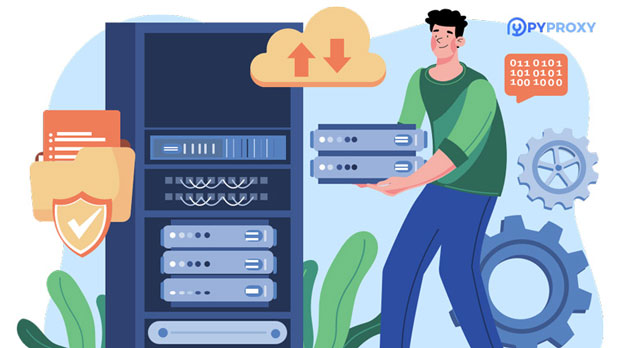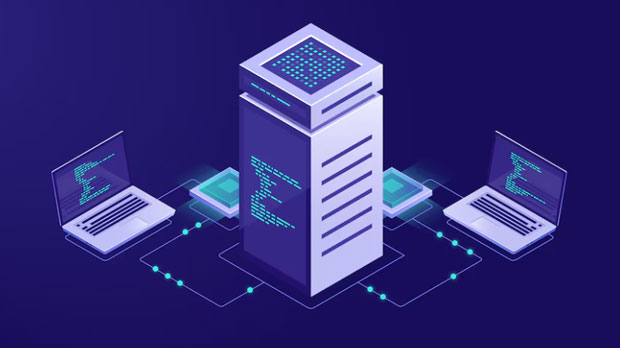When deciding to purchase datacenter proxies, one of the primary considerations is whether the project you are working on is short-term or long-term. Datacenter proxies are a valuable tool for users who need to mask their IP address, scrape data, or manage multiple accounts. However, choosing the right type of proxy for your needs can make a significant difference in both performance and cost-efficiency. In this article, we will delve into the factors to consider when selecting datacenter proxies for short-term and long-term projects, emphasizing the benefits and limitations of each choice. Understanding Datacenter ProxiesBefore delving into the specificities of choosing datacenter proxies for different types of projects, it's essential to understand what they are and how they work. Datacenter proxies are IP addresses provided by data centers, rather than residential ISPs. These proxies are typically faster and cheaper compared to residential proxies, which is why they are widely used for various online activities, such as web scraping, data mining, or running multiple accounts simultaneously.However, their performance and longevity are highly dependent on the use case, which brings us to the crucial question: should you opt for datacenter proxies for short-term or long-term projects?Short-Term Projects: Why Datacenter Proxies are IdealFor short-term projects, the need for high performance, speed, and low cost makes datacenter proxies a favorable option. Here’s why:1. Cost-EffectivenessShort-term projects often have limited budgets, and datacenter proxies are typically more affordable than residential proxies. With datacenter proxies, you get the benefit of high-speed connections at a fraction of the price, making them an excellent choice for projects that need to be completed within a tight timeframe.2. Speed and PerformanceDatacenter proxies provide faster speeds and better connection reliability than most other proxy types. For short-term projects that require quick data scraping, website testing, or handling multiple accounts within a short window, these proxies are ideal due to their superior performance.3. Scalability for High TrafficIn short-term projects that involve high traffic, such as social media campaigns, marketing tests, or large-scale scraping, datacenter proxies can handle multiple requests simultaneously, ensuring the success of the project within its duration.4. Temporary NeedsAs short-term projects are limited in duration, there's no need for the long-term stability or complex features that come with residential proxies. Datacenter proxies offer the ideal balance of short-term functionality, making them the best choice for quick-turnaround tasks.Drawbacks for Short-Term ProjectsDespite the numerous advantages, datacenter proxies do have some drawbacks when used for short-term projects:1. Block RiskSince datacenter proxies are easily identifiable as non-residential IPs, websites might flag or block them. In a short-term project, this could lead to interruptions or additional costs if the proxies are banned or restricted.2. Limited Geographical CoverageDatacenter proxies may not offer the same level of geographical diversity as residential proxies. If the project requires IPs from a particular location, this could pose limitations.Long-Term Projects: Evaluating Datacenter Proxies for Sustained UseFor long-term projects, choosing datacenter proxies requires a more strategic approach, balancing cost, reliability, and long-term effectiveness. Here’s a breakdown of why datacenter proxies may or may not be suitable for long-term use:1. Long-Term Cost ManagementWhile datacenter proxies are affordable for short-term projects, using them for an extended period may require careful management of costs. If a long-term project requires frequent and consistent access to many proxies, it's essential to consider how the price per proxy will scale over time.2. Stability and ReliabilityFor long-term projects, proxy stability is crucial. Datacenter proxies, though initially cost-effective, may become less reliable if the project depends on maintaining a continuous stream of requests over weeks or months. Proxies may face frequent IP bans or throttling, especially in large-scale scraping or automation tasks.3. Addressing IP Blocking ChallengesIn long-term projects, the risk of IP blocking becomes more significant. Websites or services are more likely to identify and block datacenter proxies over time, especially if the project requires frequent or repetitive actions. To combat this, you might need to implement IP rotation or acquire a dedicated set of proxies for long-term use.4. Geographical Coverage for Specific NeedsLong-term projects often demand proxies from specific geographical regions. Datacenter proxies may not provide the level of location-based diversity needed for certain tasks. If the project requires widespread geographical access, investing in residential proxies or hybrid proxy solutions might offer better coverage.Advantages of Datacenter Proxies for Long-Term ProjectsDespite these challenges, datacenter proxies can still be useful for long-term projects under the right circumstances. Here’s how:1. Reliable Performance for Low-Complexity TasksFor long-term projects with consistent, low-complexity tasks (such as automating simple actions or gathering data from non-competitive sources), datacenter proxies can offer stable, reliable performance over time without significant risk of blocking.2. Customization and ControlWith long-term projects, you may have the option to choose dedicated or semi-dedicated datacenter proxies, which offer better control and a lower chance of encountering shared IP issues. This customization option can enhance both performance and security for sustained proxy use.3. Optimized for Bulk ActionsIf the long-term project involves bulk actions like large-scale data collection, testing, or running many accounts (e.g., for SEO, social media management), datacenter proxies can handle large traffic volumes, offering both scalability and flexibility over time.Challenges for Long-Term Use of Datacenter ProxiesWhile datacenter proxies offer advantages, the following challenges should be considered for long-term projects:1. Risk of Proxies Becoming BlacklistedIf your long-term project relies on the same proxy pool, there’s a higher likelihood that your IPs may get blacklisted, especially if your actions are perceived as suspicious. Ongoing maintenance and IP rotation can help mitigate this risk, but it does add complexity to the management of the project.2. Continuous Management RequiredMaintaining high-quality proxies for long-term use demands ongoing management, such as regular updates to the proxy pool, handling downtimes, and ensuring proxy efficiency. This can become time-consuming, requiring dedicated attention.Choosing the Right Solution Based on Your NeedsUltimately, whether you choose datacenter proxies for a short-term or long-term project depends on your specific requirements:- For short-term projects, datacenter proxies are typically the better choice due to their lower cost and superior speed. However, be aware of the potential for IP blocks and limited geographic coverage.- For long-term projects, while datacenter proxies are still useful for certain tasks, you must weigh the risk of IP blocking and the need for geographical diversity. You may need additional management strategies to ensure consistent proxy performance.Conclusion: Tailoring Proxy Choices to Project TypeChoosing the right proxies for your project can be the key to success. Whether you're working on a short-term or long-term project, understanding the trade-offs between cost, performance, and sustainability will help you make a more informed decision. For short-term projects, datacenter proxies provide cost-effective, high-speed solutions, while for long-term projects, you may need to factor in the stability and management required to sustain proxy performance over time.
Oct 24, 2025



































































